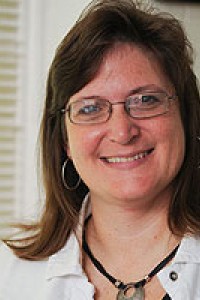Since 2015, AMTE has been developing a new leadership and committee structure to better support AMTE's growing influence and scope of work.
This page is a public description of a proposed restructuring of AMTE's governance, highlighting the rationale, proposed organizational structure, and leadership.
History & Rationale for Restructuring
AMTE President Christine Thomas explained the history and rationale for the proposed restructuring in the Fall 2016 issue of Connections. Dr. Thomas also shared a feedback form for members to share questions and concerns.
The rationale for the restructure is centered in two core outcomes of an analysis of AMTE's work. First, there are gaps in how the mission and goals of AMTE are addressed. Second, the current structure of the governance does not adequately situate the organization to respond to the plethora of issues and challenges in mathematics teacher education.
As a reminder, AMTE’s Constitution states the following goals:
- Promote effective mathematics teacher education programs and practices;
- Promote communication and collaboration among those involved in mathematics teacher education;
- Promote research and other scholarly endeavors related to mathematics teacher education;
- Promote ongoing professional growth of mathematics teacher educators;
- Advocate for effective policies and practices related to mathematics teacher education at all levels; and
- Advocate for equitable practices in mathematics teacher education, including increasing the diversity.
The Board sought a governance structure that would more effectively support the capacity to scale up efforts with respect to these goals, with particular attention paid to initiatives for equitable practices, effective policies, and professional growth of mathematics teacher educators.
What We Do
There was a time when many AMTE members viewed the Annual Conference as the main focus of the organization, but our organization is now much more! Below is a partial list of spaces in which AMTE resides:
- AMTE publishes
- the Mathematics Teacher Educator journal in collaboration with NCTM,
- Contemporary Issues in Technology and Teacher Education - Mathematics online journal in collaboration with SITE,
- the Connections newsletter, and
- books and monographs
- AMTE engages regularly with other organizations related to mathematics teacher education such as the Conference Board of Mathematical Sciences, the Mathematics College and Career-Readiness Coalition, and the National Technology Leadership Initiative.
- AMTE engages in meetings of other organizations to react to documents and collaborate in ongoing initiative in the community of the mathematical sciences (e.g., MET, CAEP, Common Vision, TPSE, ESSA, and so on).
- AMTE engages in advocacy about issues related to MTE (e.g., taking a position, interacting with partner organizations, and being at the table for called meetings such as the National Academy of Sciences meeting for the discussion of a mathematics education board and NCTM’s called meeting for collaboration on equity and access in mathematics education).
- AMTE creates and disseminates policy documents (e.g., the developing Standards for Mathematics Teacher Preparation, Standards for Elementary Mathematics Specialists , AMTE Review of CAEP Draft Standards).
- AMTE engages in member professional development, including webinars and mentoring.
- AMTE gives numerous awards honoring MTEs for their significant contributions to the field.
- AMTE administers the STaR program for early career faculty in MTE.
Proposed New Governance Structure (beginning February 2017)
In the proposed restructure, AMTE's work will be organized around five divisions, each of which is led by an appointed Vice President who works closely with an Elected Member of the Board of Directors and a small administrative Headquarters.
The new divisions highlight 5 major areas of work in the organization:
Each division will be led by a vice president, appointed by the President with the approval of the Board. Although each vice president will be responsible for overseeing the work carried out within his or her respective division, the work of AMTE often crosses divisions, thereby requiring vice presidents to work closely together with each other and with the presidents and executive director. For example, work of the Annual Conference intersects all divisions.
An impressive group of qualified, committed, AMTE members have agreed to serve as inaugural Vice Presidents of the new divisions:
Vice President for Membership

Maggie B. McGatha is an associate professor of mathematics education in the Department of Middle and Secondary Education at the University of Louisville. She is a former middle school mathematics teacher. At the university level, she has taught elementary and middle school mathematics methods courses and currently teaches courses on coaching and mentoring. Maggie recently served as co-editor (with Nicole Rigelman) on the second book in the AMTE Professional Book Series, entitled Elementary Mathematics Specialists: Developing, Refining, and Examining Programs that Support Mathematics Teaching and Learning. She has been actively engaged in other AMTE work focused on Elementary Mathematics Specialists (EMS) including being a member of the writing team of the EMS Standards, co-facilitator of three EMS conferences, and chair of the EMS Joint Position Statement Task Force. Maggie served on the AMTE Board of Directors as Secretary from 2011-2014. She has also served on the AMTE Mentoring and Constitution and By-laws Committees.
Vice President for Professional Learning

M. Lynn Breyfogle is a Professor of Mathematics and Associate Dean for the College of Arts & Sciences at Bucknell University. Her research interests include changing pre-service and in-service teachers' beliefs about mathematics pedagogy, supporting effective classroom discourse, and exposing issues of privilege and equity in mathematics education. She is presently the PI on an NSF STEP2 grant “Using Early Introduction to Undergraduate Research to Recruit, Retain, and Graduate More STEM Majors”. She has been a member of AMTE since 1997 and served as Secretary for AMTE (2008-11), board liaison to the Membership, Mentoring, and TE-MAT Committees. In other service to AMTE, she served as chair of AMTE’s CCCSS Task Force (2012), team member attending the National Math Panel Forum, editorial panel member for the 2007 AMTE Monograph Cases in Mathematics Teacher Education: Tools for Developing Knowledge Needed For Teaching, and AMTE Teacher Resource Task Force member (2004-09). She has also served as chair of and member on NCTM’s Teaching Children Mathematics Editorial Panel, member of the 2011 NCTM Yearbook Motivation and Disposition: Pathways to Learning Mathematics editorial panel, PCTM Annual Yearbook co-editor, and chair of the Membership Committee for PA-AMTE (2007-09).
Vice President for Publications

Christine Browning is a Professor of Mathematics Education in the Department of Mathematics at Western Michigan University based in Kalamazoo, Michigan. She teaches undergraduate and graduate mathematics content courses for K-8 preservice teachers. Christine is interested in developing mathematics curriculum for preservice elementary/middle school teachers that a) makes appropriate use of digital tools and b) incorporates artifacts of children’s thinking. She is also interested in the use of digital tools that extend the walls of the mathematics classroom and engage preservice teachers with mathematics teaching and learning. Her research areas of interest are on mathematical and statistical content knowledge for K-8 teaching, and technology, pedagogy, and content knowledge (TPACK). Christine’s service to AMTE includes being one of the first co-editors for the CITE-Math journal, along with Mark Klespis, in 2000. She and Mark served in the same capacity again beginning in 2008. She has also served on the the AMTE Technology Committee, Nominations Committee and the celebrations task force. She has been the Publications Director since 2012.
Vice President for Advocacy, Equity, & Research
Paola Sztajn is a professor of mathematics education at North Carolina State University and the Department Head for Teacher Education and Learning Sciences. Her research program focuses on elementary teachers’ professional development in mathematics. Related to this topic, she is currently the Principal Investigator for two grants from the National Science Foundation: All Included in Mathematics-Expansion and Dissemination (DRK-12) and Learning Trajectory Based Instruction (REESE). Her research has been published in journals such as Educational Researcher, Journal for Research in Mathematics Education, Journal of Mathematics Teacher Education, Journal of Teacher Education, Teaching and Teacher Education,and Teaching Children Mathematics. Paola served as a program officer at NSF for three years. She has served on the editorial board panel for JRME and was the SIG-RME co-chair and chair between 2013-2015. At AMTE, she served on the initial AMTE Research Task Force and subsequent Research Committee. She also served on the CCSSM and the Emerging Issues Committees for AMTE.
Vice President for Communications & Outreach
Suzanne Harper is a Professor of Mathematics Education in the Department of Mathematics at Miami University in Oxford, Ohio. She teaches undergraduate and graduate mathematics content courses for preK-12 teachers. Her research focuses on the teaching and learning of mathematics with technology, most recently emphasizing the affordances technology plays in mathematical creativity. Suzanne has served AMTE in various capacities including as treasurer (2013-2016) and as the 2013 program chair. She has also been an active member of the following: conference leadership committee, celebrations task force, monograph editorial panel, membership committee, program committee and technology committee.
Committees within the Restructure
The Board examined all committees for alignment to the ongoing work, and each committee was either placed within a particular division or the work of the committee was subsumed into a different committee. In some cases, the Board determined that the work of a committee would best be carried out by individuals. As a result, each division contains associate vice-presidents and, in most cases, the associate vice-president will oversee a committee comprised to carry out the work.
Elected Board within the Restructure
Within the new structure, the current composition of the elected Board will be maintained; this is shown in the organizational chart. However, the restructure changes the way in which the elected Board will operate. The restructure is designed so that the major work of AMTE takes place within divisions, and in addition to the vice president, associate vice-presidents, and committee members, each division will have one assigned Board liaison. Regular division meetings will be held. Also, the division vice presidents will meet periodically with the presidents and Executive Director. The full Board of elected and appointed members will continue to meet to review, provide feedback and approve the ongoing work within and across divisions, but the current practice of monthly meetings of the full Board of Directors will no longer be necessary.
Moving Forward
Updates to the by-laws and approval of the revised by-laws of the newly incorporated AMTE will need to occur in the Annual Business Meeting at the 2017 Annual Conference. Given that some committees will be eliminated or folded into other committees under the restructure, it was not necessary for AMTE to request members to volunteer for committee appointments for 2017. As the transition moves forward, members will be updated on procedures for committee appointments.

Comments and Questions
The Board is actively seeking feedback from members on the proposed restructuring of the governance of AMTE. Please submit your thoughts using the form below.
